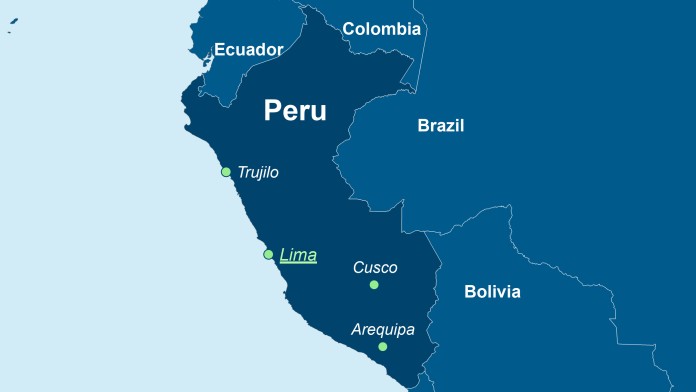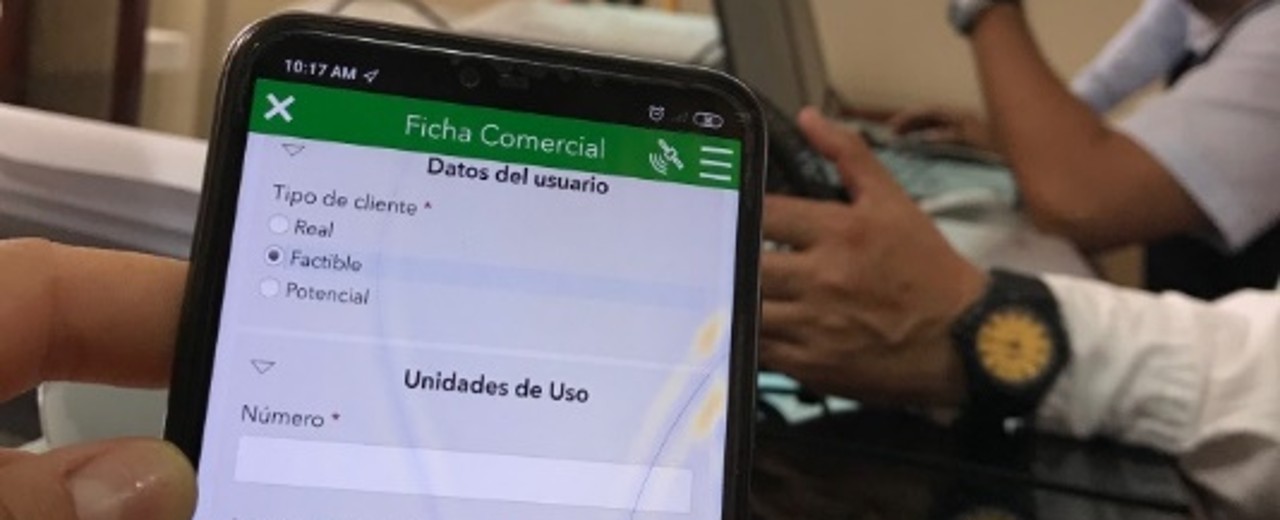
As of: 11/2021
Peru suffers from water shortage in large parts of the country. Global climate change is further exacerbating this situation. In addition, there is the geographical distribution of the population: more than half of the population lives on the Pacific coast, the driest region of Peru, which at the same time consumes almost 90% of the country's drinking water. In order to ensure a sufficient and sustainable water supply for the people in the coastal cities, the technical and commercial cadastres of the water supply companies in two urban agglomerations are being digitised and combined in a geoinformation system. This will not only enable water losses in the supply networks to be recorded. The system also helps to put the water supply companies on a solid economic footing in the long term.
Peru is one of the ten countries worldwide that are most affected by climate change. Water scarcity is one of the biggest challenges facing the country. Urban water utilities in particular are confronted with the task of meeting the growing water needs of a steadily expanding population. In many cases, their drinking water treatment plants have technical deficiencies that lead to considerable water losses and sub-optimal water quality. This also applies to the water supply companies in the coastal towns of Chimbote and Tacna. Due to inadequate networks and missing water meters, they are often not able to measure consumption and charge for it accordingly – a basic prerequisite for maintaining or expanding a sustainable supply network. And furthermore, if billing is independent of consumption, consumers often lack the awareness that water is a precious resource that must be protected. And this is especially true in a country whose water balance is coming under even greater pressure due to climate change. Moreover, water supply companies are hardly in a position to locate and remedy water losses in the pipe system. As a result, large sections of the population in both cities can often only be supplied with water for a few hours a day

On behalf of the German government KfW Development Bank is supporting the Peruvian water utilities in Tacna and Chimbote in ensuring a sustainable and reliable water supply.
In addition to new equipment such as water meters and other material, the digitalisation of the technical and commercial cadastre as an integrated system is a central element of the project and the basis for an up-to?date geographic information system. This means that every single water pipe in the network can now be graphically displayed in the water supply companies, including the associated technical information. The same applies to the commercial cadastre: every household is recorded here with its current data, including name and number of persons as well as number and age of the water meter. The newly installed domestic water meters allow that every household receives correct water bills and their payment can be checked.
Another component of the project is the division of the drinking water network into individual sectors, which are divided into different districts with about 3,000 households. For each of these districts there is a clearly defined access with a large water meter that registers exactly how much water flows into each sector of the network. If discrepancies in consumption subsequently become apparent, the water supply company can troubleshoot and intervene accordingly: Are leaks in the pipes responsible for water losses or is the cause due to a lack of honesty in water consumption in individual households?
For the monitoring of the plants, the project focuses on the introduction of a uniform so-called SCADA system with which the plants can be monitored and controlled remotely and which can be expanded at any time. In the future, data from the cadastres as well as from sectorisation will be incorporated into a management information system that can form the basis for decisions by the water supply management. An important task – and at the same time the greatest challenge – for the water supply company is now to keep the data up to date, i.e. to update it immediately if, for example, new lines are built or old ones replaced or customer data changes. Only with up-to-date data can water losses and leaks, as well as illegal connections (so-called "clandestinos"), be detected and rectified, and a sus?tainable water supply be ensured.
Economically, the project is already showing its first effects. The revenues of the water utilities have already increased noticeably, firstly because water losses have been reduced and secondly because it is now possible to issue invoices in an orderly manner. This is why the project was set to be expanded: at the end of 2020 a third Peruvian city, Trujillo, joined the programme. In addition, the project has met with a great response beyond national borders: Costa Rica will introduce a similar project, and Brazil has also expressed interest.
The project contributes to the achievement of these following United Nations Sustainable Development Goals:
KfW Group
KfW Development Bank
Water and Waste Management, Latin Amerika and Carribean
Deparment for Digitalisation, Innovation and Communication
Share page
To share the content of this page with your network, click on one of the icons below.
Note on data protection: When you share content, your personal data is transferred to the selected network.
Data protection
Alternatively, you can also copy the short link: https://www.kfw-entwicklungsbank.de/s/enzBsxXI
Copy link Link copied